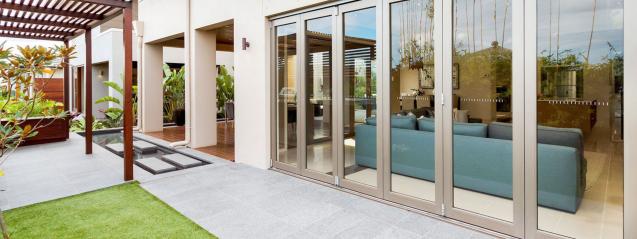
How to Create an Accessible Home
The needs and use of any household can drastically change over time, be it ageing, having children, or having an accident that could affect your mobility. Therefore, it becomes necessary to adapt the house to accommodate changing needs.
For example, it is a good idea to ensure that your home is more accessible to wheelchair users. One of the objectives of the Australian government’s Disability (Access to Premises — Buildings) Standards of 2010 is that ‘dignified, equitable, cost-effective and reasonably achievable access to buildings, facilities and services within buildings’ be made available to people with disabilities.
If you’re looking for ways to create a more accessible home, read on.
1. Install disabled access doors
Installation of disabled access doors will provide persons with disabilities unhindered, independent access to your home. The decision between automatic sliding doors or swing door options depends on the area of the house the entrance is located, but a professional assessment by trained door technicians will be required to make an informed decision.
Automatic disabled access doors and entrances have distinct advantages because they facilitate access to various people, including those with disability issues, the elderly, parents with prams, people with temporary injuries and delivery people with large bags.
Access control systems are easier to use than doorknobs. Infrared and microwave devices can be installed so a door opens automatically when someone stands in front of it. Actuation push buttons placed within the reach of a wheelchair user will open a door when the touchpad is pressed and close automatically after a while.
For the front of your property, if security is important to you, we also recommend installing a gate automation system that will allow you to remotely open and close your gate.
2. Widen doorways for accessibility
One of the best ways of ensuring that the home is easily accessible to everyone, including wheelchair users, is to widen the doorways. The door width needs to measure about 850 mm from the doorstop to the face of the opened door to provide unfettered access to a disabled person in a wheelchair.
3. Prepare the space outside the entrance
Parking spaces for the disabled should be clearly marked and located close to the building entrance. There should also be a clear and continuous path of travel to the door. A good lighting system at the entrance is essential, as it makes access safe and efficient. The use of automatic sensors will enable lights to come on automatically when someone is at the door and turn off shortly after the person has left the entrance.
4. Use wheelchair-friendly floors
The approach to your home entrance should have a tarmac surface floor or an alternative hard material that will provide a firm, non-slippery grip for the wheelchair. Within the home, the floors should also be wheelchair friendly. This implies that they are slip-resistant and will allow the wheels to roll freely. Suitable materials for such floors include laminate floorboards, hardwood, and vinyl in-laid tiles.
5. Add ramps or lifts to stairs
If the entrance to your home is not on the ground level and users have to encounter steps or high thresholds in the floor elevation, you need to add a wheelchair ramp to your stairs. The slope of a ramp must be gradual. People with a disability using manual wheelchairs should always be accompanied by a helper when travelling up or down the ramp to prevent accidents. Low floor elevations require only threshold ramps, which can be made from recycled rubber or adjustable aluminium frame.
The addition of a wheelchair lift will offer immediate access to your home without the need for a ramp. These lifts are designed to save space and accommodate disability access requirements.
Get started on your accessible home journey
You can make your home more accessible to most occupants of your home by adding fixtures that will meet their changing needs over time. If you own a multilevel home, it should be adapted to the needs of less mobile occupants. Disabled persons require doorways wide enough for wheelchair use.
The small steps you take and changes you put in place today will make a world of difference for those with mobility restraints. Additionally, an accessible home opens up your home to a wider market once it comes time to sell.
For example, it is a good idea to ensure that your home is more accessible to wheelchair users. One of the objectives of the Australian government’s Disability (Access to Premises — Buildings) Standards of 2010 is that ‘dignified, equitable, cost-effective and reasonably achievable access to buildings, facilities and services within buildings’ be made available to people with disabilities.
If you’re looking for ways to create a more accessible home, read on.
1. Install disabled access doors
Installation of disabled access doors will provide persons with disabilities unhindered, independent access to your home. The decision between automatic sliding doors or swing door options depends on the area of the house the entrance is located, but a professional assessment by trained door technicians will be required to make an informed decision.
Automatic disabled access doors and entrances have distinct advantages because they facilitate access to various people, including those with disability issues, the elderly, parents with prams, people with temporary injuries and delivery people with large bags.
Access control systems are easier to use than doorknobs. Infrared and microwave devices can be installed so a door opens automatically when someone stands in front of it. Actuation push buttons placed within the reach of a wheelchair user will open a door when the touchpad is pressed and close automatically after a while.
For the front of your property, if security is important to you, we also recommend installing a gate automation system that will allow you to remotely open and close your gate.
2. Widen doorways for accessibility
One of the best ways of ensuring that the home is easily accessible to everyone, including wheelchair users, is to widen the doorways. The door width needs to measure about 850 mm from the doorstop to the face of the opened door to provide unfettered access to a disabled person in a wheelchair.
3. Prepare the space outside the entrance
Parking spaces for the disabled should be clearly marked and located close to the building entrance. There should also be a clear and continuous path of travel to the door. A good lighting system at the entrance is essential, as it makes access safe and efficient. The use of automatic sensors will enable lights to come on automatically when someone is at the door and turn off shortly after the person has left the entrance.
4. Use wheelchair-friendly floors
The approach to your home entrance should have a tarmac surface floor or an alternative hard material that will provide a firm, non-slippery grip for the wheelchair. Within the home, the floors should also be wheelchair friendly. This implies that they are slip-resistant and will allow the wheels to roll freely. Suitable materials for such floors include laminate floorboards, hardwood, and vinyl in-laid tiles.
5. Add ramps or lifts to stairs
If the entrance to your home is not on the ground level and users have to encounter steps or high thresholds in the floor elevation, you need to add a wheelchair ramp to your stairs. The slope of a ramp must be gradual. People with a disability using manual wheelchairs should always be accompanied by a helper when travelling up or down the ramp to prevent accidents. Low floor elevations require only threshold ramps, which can be made from recycled rubber or adjustable aluminium frame.
The addition of a wheelchair lift will offer immediate access to your home without the need for a ramp. These lifts are designed to save space and accommodate disability access requirements.
Get started on your accessible home journey
You can make your home more accessible to most occupants of your home by adding fixtures that will meet their changing needs over time. If you own a multilevel home, it should be adapted to the needs of less mobile occupants. Disabled persons require doorways wide enough for wheelchair use.
The small steps you take and changes you put in place today will make a world of difference for those with mobility restraints. Additionally, an accessible home opens up your home to a wider market once it comes time to sell.



